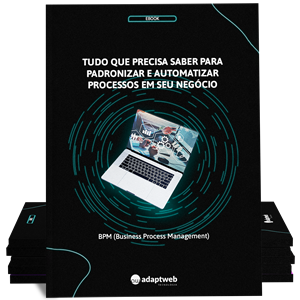A well-managed accounts payable process manages the financial cycle of the business effectively. Accounts Payable is an important aspect of the accounting process of any business. The management of accounts payable (AP) is a key component in determining a company’s cash flow. AP represents the amount of money that a business owes to its suppliers or vendors for goods and services received.
- Obviously, by creating and managing invoices time-to-time and getting paid faster.
- If a business uses a credit card, the purchase will be recorded in accounts payable until it is paid off.
- This real-time collaboration eliminates version conflicts, software updates, security loopholes, imports, exports, and other inefficiencies.
Accounts payable is a liability on your balance sheet because it represents debt you owe to others. This can include things like inventory, raw materials, utilities, rent, and other business related expenses. So, just like you wouldn’t want to run out of gas on a long road trip, it’s important to keep your accounts payable system well-oiled and running smoothly to keep your business moving forward. Using a payment service such as Wise Business makes sending payments easy. Suppliers appreciate receiving prompt payment for their goods and are more likely to provide better terms during future negotiations. The wrong move or a disruption in the delivery of goods could send a company spiraling out of control.
Standardized Processes
The quantity and description of the goods shown on the receiving report should be compared to the information on the company’s purchase order. Shopify Bill Pay is fully-integrated with your Shopify admin, which means you can make, track, and manage vendor payments in real-time from the same place you run your business. Again, if you only have a few vendors to pay, this may not be an issue, but even if you have to pay just five vendors monthly, your life will be much easier if you use accounting software. Accounting software will flag payments that are due soon, ensuring you see them with plenty of time to pay them. Using manual systems, you alone are responsible for viewing your manual ledger or spreadsheet to see what payments are due. If you pay your vendors using a check, you should probably include a copy of the invoice in the envelope along with the check.
However, in this article, we will talk about accounts payable meaning, accounts payable journal entry, accounts payable process, and accounts payable examples. When the vendor invoice is paid, the voucher and its attachments (including a copy of the check that was issued) will be stored in a paid voucher/invoice file. If paper documents are involved, an office machine could perforate the word “PAID” through the voucher and its attachments. To illustrate the three-way match, let’s assume that BuyerCo needs 10 cartridges of toner for its printers.
Delays along the account payable cycle can snowball into late receipts of ordered items, poor credit rating, poor relationships with vendors and fees/fines. The AP department is a busy place and is typically awash in manual processes, whether that’s cash management, paper invoices, data entry, or double-checking due dates. There are many challenges presented and a variety of systems working in tandem to process payment. An Accounts Payable department manages incoming invoices and processes payments of those bills. Implementing business and finance procedures to streamline an accounts payable process can streamline an accounts payable process and prepare a company for future growth.
Use Accounts Payable Software
Undertaking these steps is crucial to minimize discrepancies and prevent financial malpractices. Accounts receivable represents the money that a business has to receive from its customers for goods or services sold on credit. On the other hand, accounts payable represents the money that a business needs to pay its suppliers for goods and services purchased on credit.
Objectives of Managing Accounts Payable Effectively
AP departments ensure that the money flows to business partners in an orderly manner to keep the wheels turning. To initiate a purchase, the purchasing department of an organization sends a PO to a vendor that includes the requested merchandise, quantity, and price to trigger an order. Ace Traders offered a credit period of 30 days within which the bill should be paid by Max Enterprises. Furthermore, AI and ML can potentially assist in assessing the sustainability measures taken by suppliers. This could be crucial for businesses desiring to align their operations with environmental values as they can choose to work with suppliers upholding similar sustainability standards. Furthermore, communication is integral when dealing with unexpected payment delays.
These purchases are made during the period for which you need to measure the accounts payable turnover ratio. However, if your vendors create and send invoices manually, then you need to start filling in the details either in your accounting software or books of accounts. Once you review all the received invoices, you can start filling in the invoice details. If your vendors create and send invoices using invoicing software, then the invoice details get uploaded to your accounting software automatically. Accounts payable if managed effectively indicates the operational effectiveness of your business.
Alliant Credit Union Business Account Review (
Tracking accounts payable is critical to evaluating a company’s current financial status. By implementing and following a weekly accounts payable cycle, you can reduce your workload at the end of the month while also avoiding late payments and late fees. Even if you only have a few vendor payments to make, processing the invoices on a regular basis can help with cash flow. If you are an accounts payable professional, your primary tasks revolve around tracking all cash flow and payments to vendors and suppliers. This is a critical role as accurate financial records are vital to the health of any business. As an important cash flow indicator, accounts payable is a sign of the health of a business.
Hence, it is crucial that every business implement certain best practices to improve their https://adprun.net/what-is-the-accounts-payable-process/ and avoid such problems from arising. Accounts payable (AP) is the money a business owes its suppliers for goods and services purchased on credit. It is a current liability in the balance sheet, representing the total of approved and unpaid invoices from the suppliers. In terms of recording and reporting, maintaining accurate accounts payable ledgers is essential.
Also, delayed payment may create ill-feeling and impacts the credibility of the business which in turn leads to disruption of the supplies. Tax law normally allows businesses to deduct expenses in the period they are incurred. Thus, managing when payables are paid could influence when deductions can be obtained. In conclusion, a well-strategized accounts payable policy doesn’t just fulfill a financial obligation, it also builds a solid foundation for long-term supplier relationships.
Likewise, you need to check whether you have received all the services that were mentioned in the vendor invoice. Further, it helps to reinvest the funds into your business that you would have otherwise paid to your suppliers. That is accounts payable acts as an interest-free source of finance for your business. Vendors often send statements to their customers to indicate the amounts (listed by invoice number) that remain unpaid. When a vendor statement is received the details on the statement should be compared to the company’s records.









